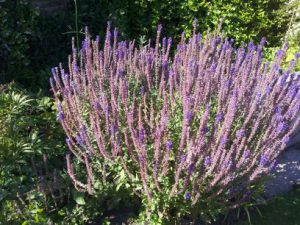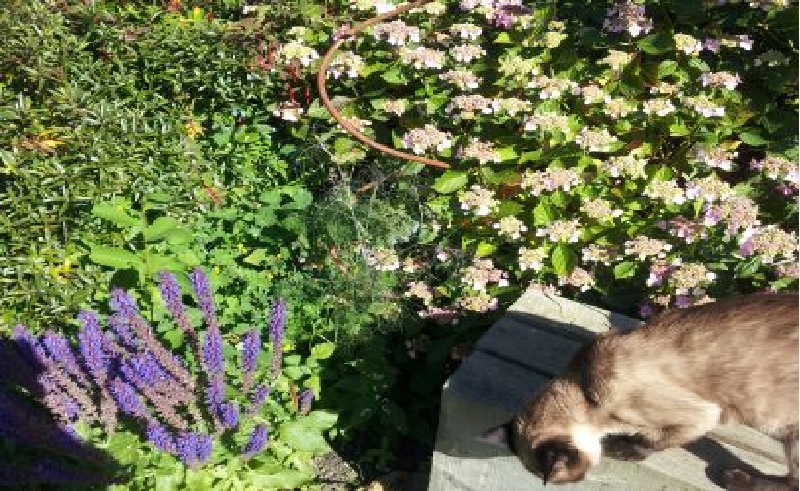This summer, gardens seem to be producing glorious versions of themselves in response to the earlier rain and now the warmth and sun. Although there are disadvantages, for instance we are cutting grass and deadheading more frequently, the size and number of blooms more than makes up for the work. Plants that are thriving in my garden this summer are dahlias, salvias and hydrangeas.

The dahlia has enjoyed a well-deserved renaissance recently since Christopher Lloyd championed the species at Great Dixter some time ago. Despite their Mexican origins, in this part of the country we do not have to worry about digging them up every autumn (despite being advised to do so by many traditionalist garden writers). A few years ago, I experimented by overwintering half my dahlias indoors and replanting in spring. The ones left in the ground grew much earlier and healthier. My main issue with these plants is supporting some blooms on thinnish stems. It pays to get a framework in early. There are 42 species and a wide range of differing flower forms – from 5cm to 30 cm heads.

Salvias are wonderfully diverse, the largest genus of plants in the mint family with nearly 1,000 species of shrubs, herbaceous perennials and annuals. There is the common salvia, with lush purple blooms, repeating later if carefully cut back. A completely different example is salvia argenta, with large furry leaves which look particularly good in containers with contrasting plants. Most salvias need light support to prevent them splitting and spreading over their neighbours.
Then we have hydrangeas. These shrubs are not to everyone’s taste. They are often associated with prissy, over-manicured front gardens, requiring strange chemical additions to alter the colours, or they are marketed as having enormous, unsupportable blooms, or garish multi-coloured flowers. There are many hydrangeas, however, which can be planted, gently nurtured at first, then left to get on with producing stunning flowers which slowly change colour over four or five months. The only care they need is the removal of spent flowers in spring, or the cutting back of main stems if they get too big. My favourites are the lacecap hydrangeas; there are also mopheads, oakleaf and paniculata.
Of course, all the above are invaluable for picking – indeed, dahlias, like sweet peas, should be picked regularly or they give up blooming for the season. Hydrangeas can be dried and may survive all winter. Some salvias have a culinary purpose and the dahlia was a food crop for the Aztecs, though even our most intrepid foragers don’t seem to have caught on to that trend!
Photos: Linda Harland



